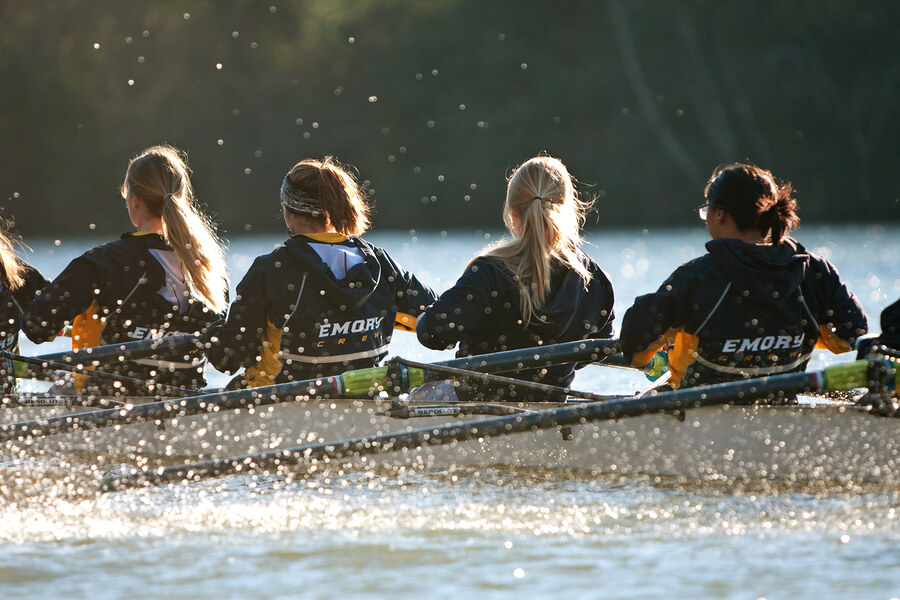DECIDING which university to attend is a difficult decision at the best of times. So many variables factor into a choice that will have a major impact on the trajectory of your life.
What is the academic reputation of your preferred university? Does the program or faculty that you want to enroll in contribute to that reputation, or does it simply benefit from the university’s overall status? What city would you study in? What are the tuition fees and living expenses? Does it have an active alumni association? What is the bar-to-student ratio of both the city and the campus?
All key questions.
This decision can be further complicated for a specific subset of the prospective student pool: student athletes. In particular, those students considering applying for an athletic scholarship have an additional set of considerations that play a major role in determining which universities they apply to. Questions of academic reputation are balanced against the quality of a university’s athletic programs; questions of cost and tuition are influenced by potential scholarship amounts; and the quality of a school’s sporting facilities are suddenly as important as the quality of its libraries and pub – er, extracurricular social cohesion facilitators.
With all this in mind, here’s a brief look at the world of athletic scholarships and what they have to offer.

USA VS THE WORLD
The world of athletic scholarships is clearly divided into two fields according to a highly scientific and extremely technical classification system: those offered in the USA, and those offered everywhere else.
This division is based on the financial and institutional nature of the scholarships, a division that has arisen for two reasons. The first is that there is a particular emphasis on university athletics in the States that isn’t present in other countries. In Europe, there is a traditional emphasis on city or regional clubs rather than university teams. The club model may lead, in certain instances, to subsidized tuition fees or, in a few exceptional cases, private education provided by a major club as they groom a young athletic prospect making his or her way up through their affiliate system. However, athletes benefitting from such arrangements are much closer to professional athletes than they are to student ones.
Aside from municipal or regional clubs, non-American athletic scholarships tend to be offered as part of an independent initiative from a particular school or sporting body. For instance, in the UK, certain schools place a strong emphasis on certain sports and so make bursaries or scholarships available to students who excel in that sport (a model that is also practiced in countries such as Canada). Some students are offered scholarships by national athletics programs to support a student pursuing their chosen sport while at university (an example is the support provided by the Australian Institute of Sports).
Other times, scholarships or bursaries originate from alumni donations or bequests, and may be tied to athletic achievement prior to, or while at, university. For potential student athletes outside the USA, searching for tailored scholarships and bursaries from independent schools, communities, foundations or sporting bodies is likely the best way to find scholarship opportunities.
In the USA, by contrast, university athletics are a nationally institutionalized pursuit, governed primarily by the National Collegiate Athletic Association (NCAA). Although some scholarships are available through the National Association of Intercollegiate Athletics (NAIA), it's the NCAA that is responsible for overseeing the vast majority of student-athlete scholarships, and has very specific regulations imposed on students, universities, and teams governing their use.
The NCAA is divided into three Divisions: Division 1, Division 2, and (you guessed it), Division 3. Schools participating in either of the top-two divisions are eligible to award athletic scholarships, while schools that participate in Division 3 are not. There are quotas assigned to each school for the scholarships they can offer, broken down by sports and gender. Student athletes interested in applying for an NCAA scholarship should be aware that although many schools actively scout and recruit students, it never hurts to send an application (this applies in particular to non-American student athletes competing outside the U.S.A. who are thinking of applying for an American athletic scholarship).
The second major differentiator between the USA and the rest of the world when it comes to athletic scholarships is money. This is a reflection of two facets of American culture. First, college sports are hugely popular forms of entertainment, and as such, NCAA sports teams can be extremely lucrative investments for universities. Second, tuition costs at American universities are staggeringly high (I use this in the most objective sense of the word “staggeringly”). Tuition fees of USD 40,000 per year are not out of the ordinary for private American universities. As such, a full-ride undergraduate athletic scholarship to an American university can have a value worth hundreds of thousands of dollars, while an athletic scholarship to a more subsidized European one may be worth a few percentage points of that.
It is worth keeping in mind, however, that the flip side of this value is that even if a student athlete receives a partial scholarship to an American university, their tuition cost is still likely to exceed that of full university costs elsewhere.

Hey, I’m an athlete… and will be a student… do you have any advice for aspiring student athletes?
Well, in all honesty, I don’t. I’ve been a student, and I would (perhaps optimistically) consider myself reasonably athletic, but I have no first-hand experience to draw from. However, I did interview an ex-student athlete who completed a full-ride scholarship at a well-known NCAA school in the south-eastern USA and later moved on to a career as a professional runner. He’s also recently come back to school for a graduate degree, and as such is able to talk about life as both a student athlete and a “regular” student.
I picked his brain for advice to give to aspiring student athletes, and here were the top 5 suggestions he gave for those interested in applying for a student athletic scholarship (both American and international programs):
1. Pick a university that you feel will optimize both your academic and athletic potential. There will often be some degree of trade-off between the two, but you want an experience that allows you to succeed both after you’ve finished university AND after you’ve finished athletic competition. For many athletes, the end of university coincides with the end of competitive athletics, and you want to be prepared for that.
2. Building on this, one of the most important determinants of maximizing athletic potential is your coach. No matter your sport, no matter your goals, no matter your university, a coach is such an integral part of your athletic life. Make sure you do your research on your coach, on what he or she brings to the table, what alumni have to say about them, and what the results from the school are. If you have 5 classes with different teachers you might spend 2 or 3 hours a week in class time with each one, but you’ll spend 5 hours a day, 6 or 7 days a week, with your coach: do your research.
3. Talk to alumni of the athletic program you’re interested in. They can tell you what they got out of it, what they failed to get out of it, their thoughts on the coach, their thoughts on course-loads and coursework, and may have picked up information about other universities and their programs while they were competing against other students. Don’t be afraid to track them down and pick their brains.

4. Look at your opportunity to contribute to the athletic program to which you’re applying. If you’d be the starting quarterback (or first-line hockey center, or football striker, or lead runner… take your pick of sporting references) for your team by your second year, that’s a different experience than if you’ll struggle to make it off the bench, even if you remain eligible for your scholarship. Look at where you want to be as an athlete in 2, 3, 4 years, and then look at whether you’ll realistically have a chance to get there.
5. Be ready for a very different and demanding experience than your student colleagues. There is a really frustrating misconception that somehow it’s “easier” to be a student athlete, or that student athletes somehow get a pass on academic requirements. While there are a couple of publicized instances where this may be the case, for the most part that’s just not true. 95% of student athletes bust their asses. A typical day for a student athlete could be: wake up at 6am. Train. Go to class for 9am. Stay in class until 2pm, at which point you need to head to practice and train some more. By the time you get to the gym, get ready, warm-up, it’s probably 3pm. Train for three hours, it’s 6pm. Shower, change, go home, make dinner, eat, it’s at the very least 7 or 8pm, and you’re exhausted. Now, do all the reading, writing, and studying that you’re supposed to do and that everyone else has had an extra 6 hours for. That was the biggest different I noticed between my undergraduate and graduate experiences: time. Time to socialize, to go out after class, to dive into the readings rather than skim them, to invest in a paper even once it’s reached the point of diminishing returns. Being a student athlete can be incredibly rewarding, but be aware that the rewards certainly come at a cost.
So, there you have it. Athletic scholarships represent an incredible opportunity for many students to pursue their passions while being financially supported, but they can also add a number of new dimensions to an already complicated decision and make for a very different student experience, in ways that can be both enriching and trying.
That’s certainly a lot to think about next time you find yourself at your local extracurricular social cohesion facilitator.
Related Articles:
What's the Difference Between Grants, Scholarships and Bursaries?
Scholarships in Barbados, Bangladesh, Botswana and 7 Other Commonwealth Countries